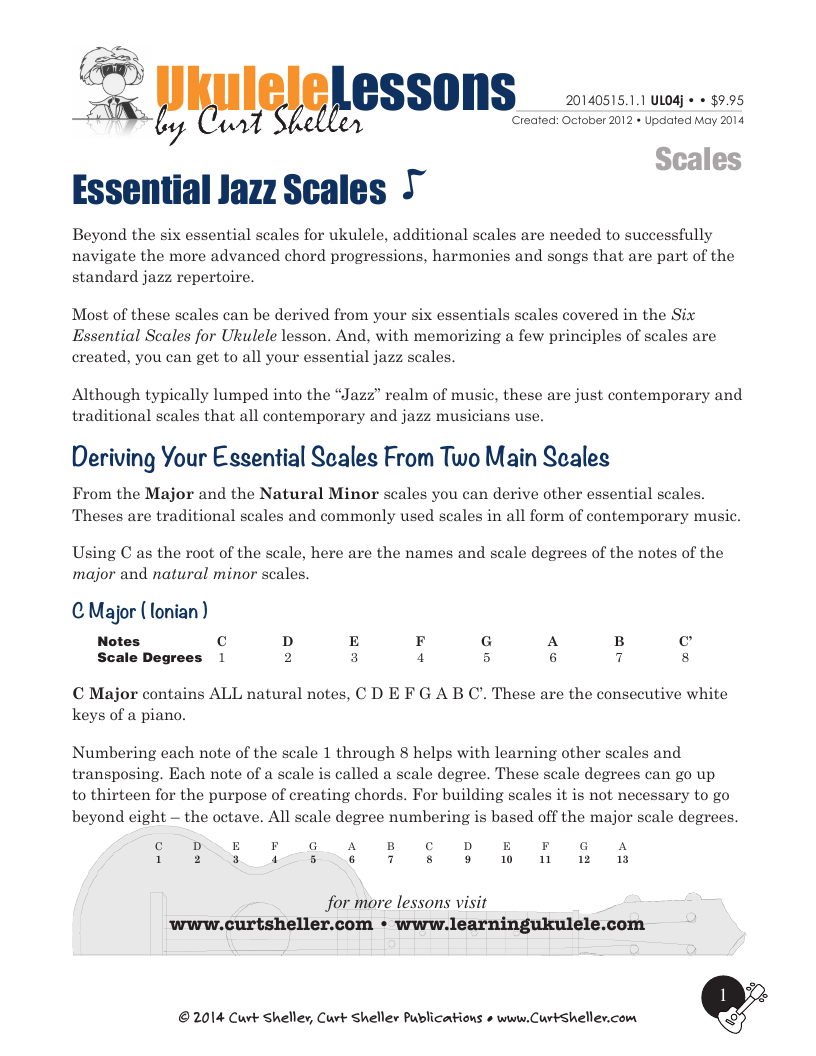This is a guest lesson/article by internationally renowned jazz guitarist and educator Chuck Anderson. Normally, we think of fingering as a technical subject. Using a good and efficient fingering makes sense. It should make anything that you play easier and more dependable.
This is a guest lesson/article by internationally renowned jazz guitarist and educator Chuck Anderson.
Available for Premium Site Access Plans Only
Normally, we think of fingering as a technical subject. Using a good and efficient fingering makes sense. It should make anything that you play easier and more dependable.
It has value to the reading guitarist because the guitar fingerboard is a treacherous trap of options. The same notes are in too many places. The same C note is on string two, fret one and string three, fret five and string four, fret ten and string five, fret fifteen. Unlike the piano which has one location for each note, the guitar compounds the problem with too many options and then throws in open strings to further confuse the issue. When reading is positional and stays within a four fret region, it’s much easier to read. However, writers and arrangers don’t attempt to stay within a four fret region of the guitar. They typically do not know or care about the guitar’s fingering option issues.
Fingering is organized by a series of motion principles that allow you to connect notes all over the instrument. These principles are: Basic — a four fret span with one finger per fret. Slide — the same finger used twice in a row on the same string at different frets. Pass — a reset of four fret span generally along the same string. It’s possible to use the reset principle as you change strings as well. Stretch — the lengthening of the four fret span resulting in a shift into a new four fret span. The stretch can also remain in the original four fret span. Contraction — the opposite of stretch. A contraction shortens the four fret span resulting in a new four fret span. Leap — the repositioning of the four fret span after using an open string. The leap can also be a non connected shift of position.
With an awareness of these principles, you can “work out” a good fingering for any reading situation. This is particularly helpful in reading Bebop heads which were not written with guitar fingering in mind. Although it’s a tedious process in the beginning, it does gradually become reflexive.
All these comments and principles apply to improvisation as well. A good guitarist moves smoothly all over the neck. The sound is connective and flowing. Without the application of the six fingering principles, solos are often limited because they suffer from the box
restriction. Learn the notes on the neck and don’t rely on tablature to get you through the maze.
Reprinted by permission from Chuck Anderson • www.ChuckAndersonJazzGuitar.com
Related Lessons, Videos, Lesson Series, Songs, Books & Reference Charts, Resources & Assets, Workshops are below.
Guitar (applies to `Ukulele also) Fingering and Creativity.

Learning the names of the notes on the fingerboard is indeed a crucial skill for any musician, especially those who play stringed instruments like the guitar, violin, or cello. Having a solid understanding of the notes on the fingerboard can significantly enhance your playing, improvisation, and overall musicality. Here's a step-by-step approach you can follow to learn the fingerboard:

QuickStart Scale and Arpeggio Fingering Series are a concise, well-organized series of books and lessons ideal for any ukulele, guitar or fretted string player beginning to explore scales and arpeggios. Unlike so many other instruction books on the market, QuickStart Scale and Arpeggio Fingering Series keeps a sharp focus on the six critical scales, their fingerings and their related chords. All material is covered in every key.
Guitar (applies to `Ukulele also) Fingering and Creativity.

Learn the six fingering principles to navigating the ukulele fingerboard. Fingering is one of the most universal topics. Whether your style is Rock, Blues, Country, Jazz or Classical, these principles will improve your technique, your solos, even your sight reading. Think of fingering as a series of pathways. When you learn to connect these pathways, there are benefits not only to technique but also to creativity.


return in your investment)—it is this— learning the
f*ckingnotes of your OWN instrument. Sorry for the tough talks—but it is sooooo true!


Learn to read single note melodies in the first/open position is a lot easier than you might think. Book: Ukulele – Reading Music Series – Primer

An organized collection of daily practice and reference material for the contemporary ukulele player for developing the vocabulary and knowledge necessary for single note playing. Book: Daily Practice Material for the Contemporary Ukulele
Checkout the Books & Reference Charts for additional Handy, Dandy Reference Charts.

Ukulele Fingerboard Chart for C Tuning, Low or High G – G C E A

Ukulele Fingerboard Chart for G Tuning, Low or High A – D G B E

A handy reference chart of all 15 major and relative minor key signatures. US Letter 8.5 x 11 sized (ANSI-A) , A4
Guitar (applies to `Ukulele also) Fingering and Creativity.









.jpg)